We celebrate the 50th anniversary of the holiday classic with a gallery of rare artwork from the film.
The post ‘How The Grinch Stole Christmas!’ is 50 Years Old Today—And It’s Still Great appeared first on Cartoon Brew.
Add a Comment
We celebrate the 50th anniversary of the holiday classic with a gallery of rare artwork from the film.
The post ‘How The Grinch Stole Christmas!’ is 50 Years Old Today—And It’s Still Great appeared first on Cartoon Brew.
Add a CommentSee how an Argentinian candidate is using a Pink Panther cartoon as part of her political campaign.
Add a CommentTime Warner is relaunching its archival animation showcase Boomerang with original content -- and commercials.
Add a Comment
 MGM has acquired the film rights to Primates of Park Avenue by Wednesday Martin, according to a report in The Hollywood Reporter.
MGM has acquired the film rights to Primates of Park Avenue by Wednesday Martin, according to a report in The Hollywood Reporter.
The controversial book about wealthy Upper East Side moms was a hot commodity among Hollywood producers. Here is more from THR:
The book sparked a bidding war with multiple bidders in the mix to pick up the memoir about the lives of rich young mothers in New York City.
The book recently made headlines after the New York Post reported that it was full of errors. Simon & Schuster responded to these claims of inaccuracy saying: “It is a common narrative technique in memoirs for some names, identifying characteristics and chronologies to be adjusted or disguised.” The publisher is updating future versions of the title to clarify some details.
Add a Comment
Even though filming seemingly just began about a month and a half ago, MGM and Sony have started to rev up the marketing machine for Spectre full blast.
Here’s the first teaser which gives us just enough to get rather excited about, including the debut of Christoph Waltz‘s shadowy villain(?), who is maybe Blofeld?
One thing that’s clear, much like Quantum of Solace was for Casino Royale, with Spectre we’ll be getting another direct sequel, this time to the billion dollar grossing Skyfall. I’m holding out hope that it lives up to its predecessor’s legacy (unlike QoS).
Spectre arrives on November 6th, here’s the official synopsis:
A cryptic message from Bond’s past sends him on a trail to uncover a sinister organization. While M battles political forces to keep the secret service alive, Bond peels back the layers of deceit to reveal the terrible truth behind SPECTRE.
MGM is developing a live-action/CGI hybrid of the children's novel "Mrs. Frisby and the Rats of NIMH."
Add a CommentWe rarely see "Peace On Earth" alongside more traditionally revered holiday standards like "A Charlie Brown Christmas" or "How the Grinch Stole Christmas"�but we really should.
Add a CommentSimpsons Movie director (and longtime Simpsons producer) David Silverman is developing a CGI/live-action Pink Panther film for MGM, reports Deadline. Unlike the other Pink Panther features, which focused on Inspector Clouseau, a role made famous by Peter Sellers, this film would focus on the Pink Panther character himself. The iconic pink cartoon cat made his debut in the title sequence of the 1963 Blake Edwards comedy The Pink Panther, and was later developed by the team of Friz Freleng, John Dunn and Hawley Pratt for a long-running series of theatrical shorts. Producers of this new film would include Walter Mirisch, who exec produced the original live-action Pink Panther features, and actress Julie Andrews, the widow of Panther film director Edwards. (CG Pink Panther by 3DSud)
Add a CommentAmong the most frustrating aspects of spring—if you don't live in southern California—is the fluctuating weather. One moment it's T-shirt weather, the next, heavy overcoat. The 1936 MGM cartoon "To Spring" explains the scientific reason for why this occurs: the elves who live underground aren't working hard enough.
Add a Comment

Animation director Michael Sporn has posted a fantastic treasure trove of images from the Golden Age MGM animation studio. The thing that I love most about these photos—and what makes them so different from any modern form of 2D animation production—is the tactility of the work.
The energy of classic Hollywood cartoons was initiated by the intense manual labor needed to produce the films. Every step of animation production required some kind of physical exertion or interaction with a physical object, from jumping on a desk to act out a scene to mixing paints with a blender to searching through boxes of sound effects to making facial expressions at a desk. With computers, we can never return to such an era of cartoon filmmaking—and, in fact, we shouldn’t—but these photos are lovely memories from an earlier period.
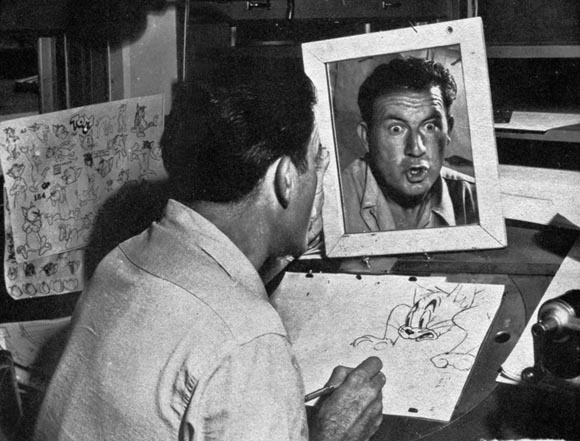
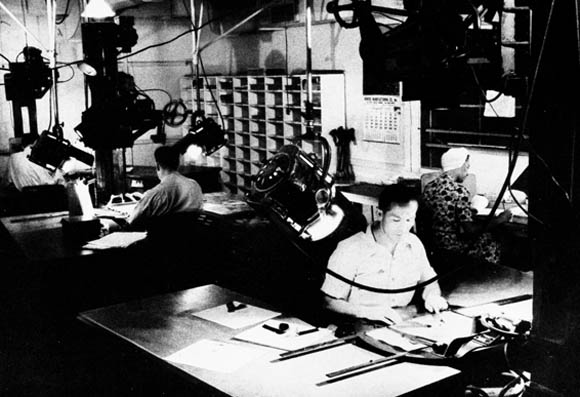
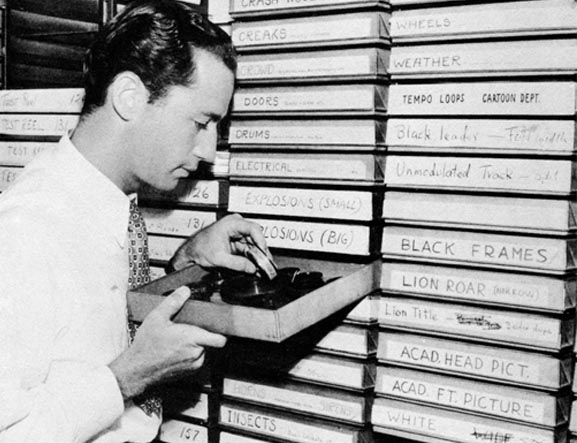
Once upon a time, way back in 1937… MGM decided to produce its own cartoons and set up a studio on the lot. They ended their arrangement with Hugh Harman and Rudolph Ising (and their Happy Harmonies series), bought the rights to popular comic strip The Captain and The Kids, and hired Friz Freleng away from Leon Schlesinger to direct the shorts. A funny thing happened on the way to the big screen – the cartoons were not popular. Here’s an example:
A year later Freleng went back to making Looney Tunes, the studio brought back Hugh Harman and Rudolph Ising — and Bill Hanna and Joe Barbera had an opportunity to emerge…
Cut to 75 years later… Mike Van Eaton has come into a cache of Captain and The Kids model sheets and has graciously agreed to let me post them here. As best I can tell, these were all drawn by Charles Thorson. Thorson really got around, designing significant characters for Disney, MGM, Screen Gems, Warner Bros., Fleischer, Terrytoons – even George Pal – in the 30s and 40s before settling into a career in advertising and illustrating children’s books. Now everything you need to know about drawing the Captain and the Kids is here for you to enjoy (click on images below, and thumbnails below that, to enlarge).
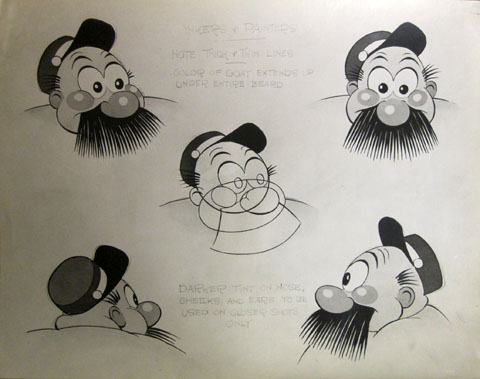
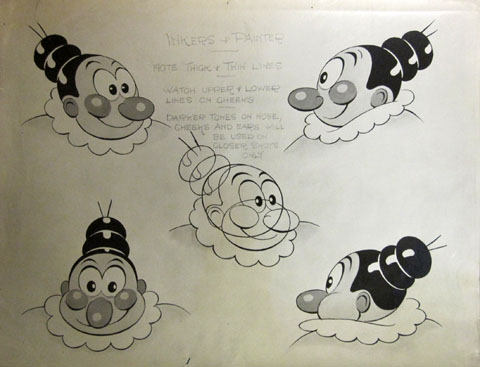
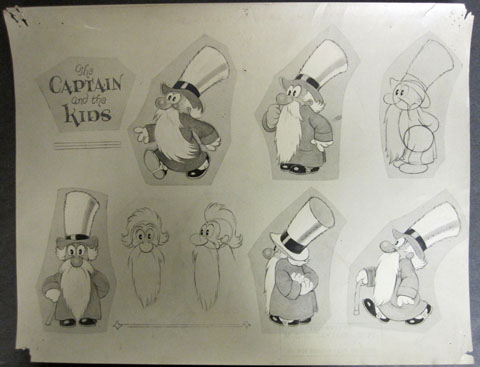
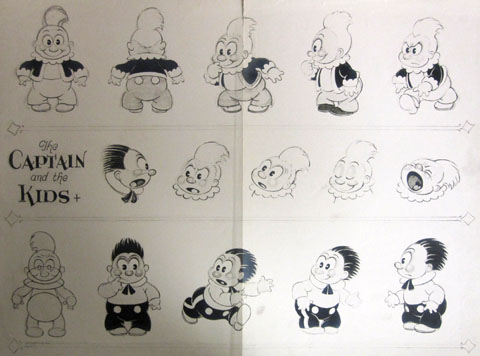
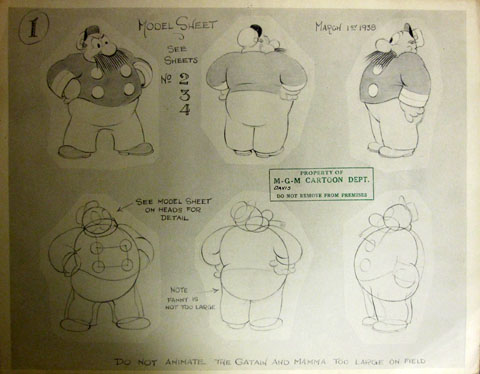
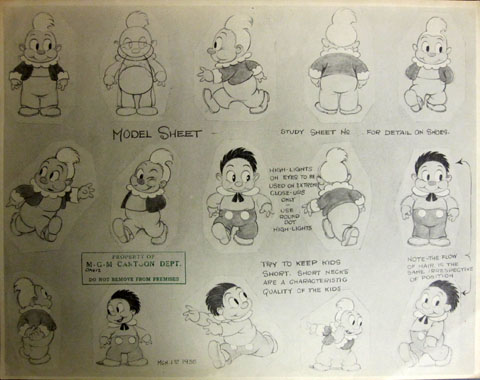
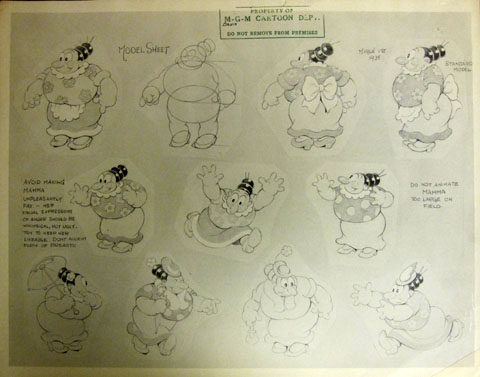
Here’s a few more (below). The first two – probably not designed by Thorson – are from the short Old Smokey (1938).
Add a Comment
Taking a position on Las Vegas is like taking an option on a company’s stock: if you like the place, you’re betting that free markets, human power over nature and boundless shopping opportunities will continue to rule the world. If you don’t like it, you’re a killjoy…or a sociologist.
I made my first trip to Las Vegas in early November when the mood in America was sour. Political candidates’ billboards shouted “Not the Incumbent!” and Senate Majority Leader Harry Reid was locked in a nasty battle for re-election against a Tea Party candidate, Sharron Angle. I was prepared to show East Coast tolerance toward libertarians and to be agnostic about the casinos’ glitz and raunch, but I wasn’t prepared for the gigantic scale of the hotels, the almost total absence of a place to stroll along the Strip and the sense that there was no city—no urban “there”–there.
I had expected to find dark romance. What I found was mega-hotels with 3,000 to 4,000 rooms dominating the skyline, multi-story parking garages for hotel guests and staff taking up a large portion of the “backstage” land and a growing reliance on shopping and dining to compensate for declining gaming revenues.
It was all tawdrier than I had imagined. I came looking for James Bond but found suburbia.
Locals told me that when the Forum Shops at the Caesars Palace Hotel and Casino opened in 1992, it was the first high-end shopping center on the Strip and attracted residents as well as tourists. It offers the same luxury brands as any upscale shopping mall, from Gucci and Tumi to 7 for All Mankind and my own New York favorite Scoop (eek!). Until now it hasn’t had much competition, but since the opening of City Center down the Strip in 2009 the Forum looks even less exclusive.
In contrast to the weird appropriations from imagined landscapes that other newish hotels feature—the imagined Venice of the Bellagio, underscaled Eiffel Tower of the Paris Las Vegas and cockeyed iconic structures of New York New York—City Center offers cutting-edge design by some of the best contemporary architects, from Daniel Libeskind and Rafael Viῆoly to Kohn Pedersen Fox. Libeskind’s jagged edges are the “point man” for the project as a whole, fronting the Strip and startling anyone who approaches City Center from the kitsch on either side.
More than a work of public art, though, City Center is a private-sector New Deal for Nevadans. Promoted as a “center of gravity” for a city that has none, this giant construction project contains two luxury hotels (one without a casino, how exclusive is that?), office towers and shopping mall; it cost about $12 billion to build. When it ran over budget and risked being shut down, Senator Reid stepped in to defend it, saving, it is said, 22,000 jobs. Typical for all such projects, City Center benefits from large tax abatements from the state.
Though the critic Paul Goldberger has praised the quality of most of City Center’s buildings and its grand interior spaces, domesticating Libeskind’s wild imagination in a shopping center emphasizes how Las Vegas tends to make everything into an accessory of capital accumulation. More than New York or London or Paris, Vegas is a city shaped by and for economic speculation. Gambling